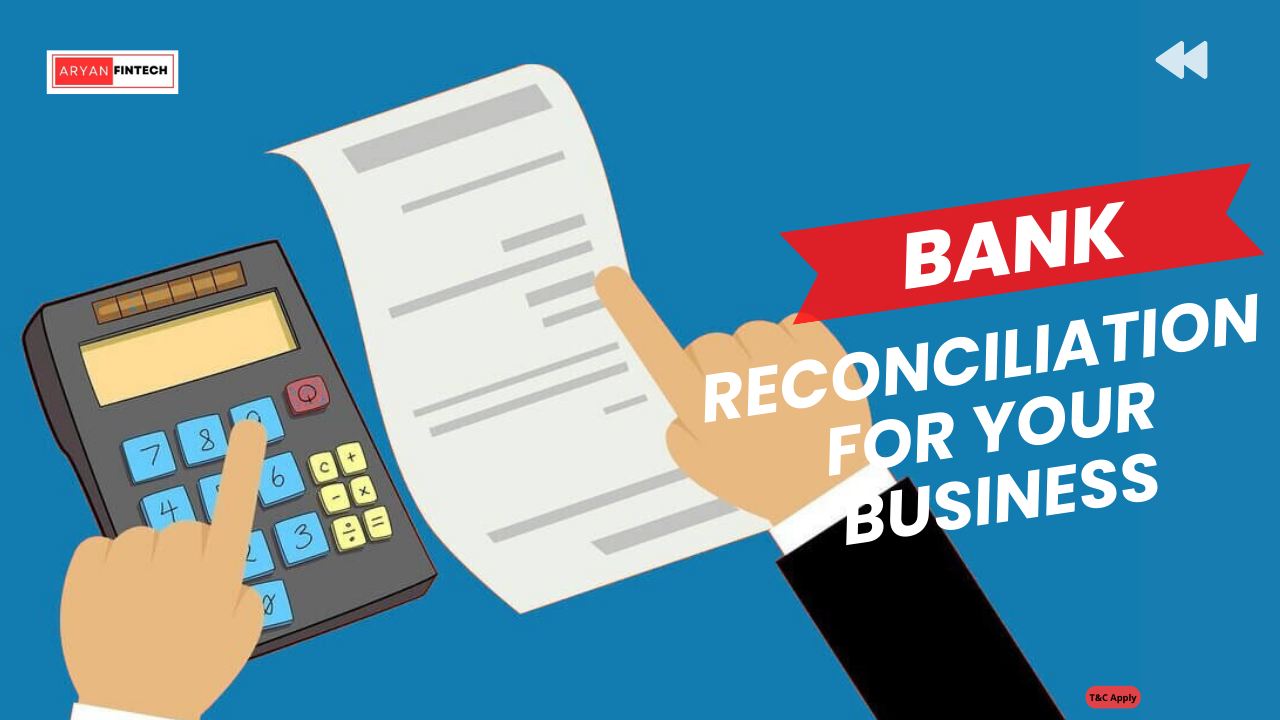The process of reconciling a bank account involves comparing the closing balance on a company’s bank statement to its internal book balance, which is the cash balance according to its accounting records.
To make sure that all deposits, withdrawals, and bank fees are taken into account, reconciliations are normally carried out once a month. Although differences between a bank statement and book balance are frequent, firms must account for each one and make the necessary adjustments to the general ledger. An organization can find any missing monies, avoid fraud, and confirm the cash flow on its balance sheet by performing a routine bank reconciliation.
How does bank reconciliation work?
Businesses should do a bank reconciliation process once a month to make sure that the amount shown on their bank statements corresponds to their internal accounting records. Check registers, the general ledger, and the balance sheet are some of these documents.
You typically need to change the book balance to conform to the bank statement because the closing balance on the business’s bank statement and its book balance are virtually never exactly the same. 1 Finding and comprehending these inconsistencies is the goal of carrying out a bank reconciliation. The balance on a bank reconciliation statement ought to match the closing balance of the bank account after all corrections have been made.
The Importance of Bank Reconciliation
An essential internal financial control tool for making sure that all of a company’s assets are accurately accounted for each month is bank reconciliation. This makes it possible to confirm that payments have been made and cash receipts have been placed in the bank.
The book balance and bank statement could be different for a number of reasons, including:
- Unpaid invoices
- Deposits in transit Income from Interest
- fees for bank services
- Electronic payments and deposits that show up on the bank statement but haven’t yet been added to the ledger for the business
For instance, your bank may have assessed costs if you requested a wire transfer or delayed payment on a check. The general ledger of your company will not record any interest payments you receive; instead, only your bank statement will show them at the end of the month.
How to Consolidate Bank Accounts
Once bank statements are received, bank reconciliations are usually performed each month. Accounting software or manual labor can both be used to complete the procedure. The majority of accounting software programs, including Blackline, Xero, and Cashbook, offer bank connectivity, which means the platform digitally links with your bank and instantly pulls data from the most recent bank statements.
1. Get your documents ready.
To account for any transactions not shown on the bank statement, you will need to go to your company’s books, check register, and receipts while doing a bank reconciliation. These source documents should be kept in binders or online because they are crucial to reconciliation.
2. Examine the debits, checks, and deposits.
Use the balance on your company’s books and the balance on your bank statement as a starting point for a bank reconciliation. Here are some crucial actions to take after obtaining this knowledge:
- Examine each and every deposit, check, and debit.
- Ensure that each deposit shows up in your account as income.
- Verify that any bank withdrawals (debits) have been entered into your company’s books. Included in this are things like bank fees that might not have been entered into your general ledger.
- Check your check register for any pending checks or in-transit deposits that might be confusing you. For instance, a check you recently issued may not have cleared, or you might have taken checks on the day the bank statement closed.
- Look over your receipts to see whether there are any cash receipts that the bank did not instantly record.
Make adjustments for pending checks
A check that has been issued by the company and recorded in its general ledger accounts but hasn’t yet cleared the bank account on which it is written is referred to as an outstanding check in bank reconciliation. This indicates that the depositor has not yet cashed the check, which prevents the money from being taken out of your company’s bank account. As a result, the company’s bank balance will be higher than its actual cash on hand.
When calculating the adjusted bank balance during bank reconciliation, the total amount of outstanding checks is deducted from the bank statement’s ending balance. Since the outstanding checks were recorded when they were issued in this instance, the company’s general ledger accounts do not need to be changed.
However, you must record a cash debit entry in the general ledger to boost the account balance if the company decides to nullify an outstanding check.
Pay attention to general ledger adjustments
Your bank balance and book balance might not match up after taking outstanding checks into account. This indicates that the bank has changed your balance, but it hasn’t yet been reflected in your general ledger.
To finish the reconciliation procedure, you must include these fees in your G/L. When conducting a bank reconciliation, looking at the bank fees in your bank statement is the simplest approach to locating these adjustments. Additionally, look for any unaccounted-for deposits of other kinds. You must change the G/L balance to reflect these things once you’ve located them.

